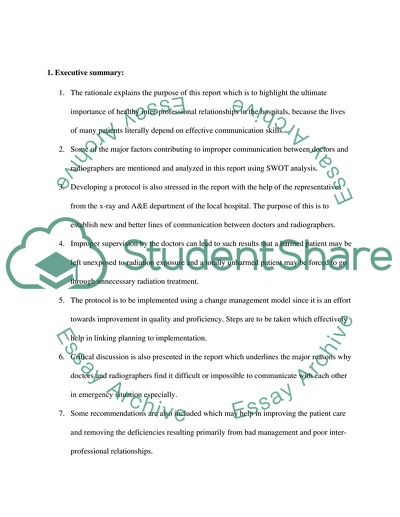Cite this document
(Communication between the X-Ray and the A&E Department Dissertation, n.d.)
Communication between the X-Ray and the A&E Department Dissertation. Retrieved from https://studentshare.org/journalism-communication/1750296-the-ways-in-which-communication-fails-in-accident-and-emergency-between-radiographers-and-doctors-and-the-precautions-that-can-be-taken-to-avoid-these-problems
Communication between the X-Ray and the A&E Department Dissertation. Retrieved from https://studentshare.org/journalism-communication/1750296-the-ways-in-which-communication-fails-in-accident-and-emergency-between-radiographers-and-doctors-and-the-precautions-that-can-be-taken-to-avoid-these-problems
(Communication Between the X-Ray and the A&E Department Dissertation)
Communication Between the X-Ray and the A&E Department Dissertation. https://studentshare.org/journalism-communication/1750296-the-ways-in-which-communication-fails-in-accident-and-emergency-between-radiographers-and-doctors-and-the-precautions-that-can-be-taken-to-avoid-these-problems.
Communication Between the X-Ray and the A&E Department Dissertation. https://studentshare.org/journalism-communication/1750296-the-ways-in-which-communication-fails-in-accident-and-emergency-between-radiographers-and-doctors-and-the-precautions-that-can-be-taken-to-avoid-these-problems.
“Communication Between the X-Ray and the A&E Department Dissertation”, n.d. https://studentshare.org/journalism-communication/1750296-the-ways-in-which-communication-fails-in-accident-and-emergency-between-radiographers-and-doctors-and-the-precautions-that-can-be-taken-to-avoid-these-problems.


